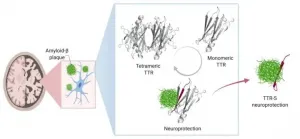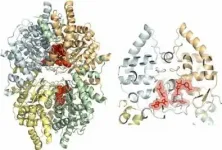(Press-News.org) (New York, NY - January 6, 2021) - Researchers at the Icahn School of Medicine at Mount Sinai have identified three major molecular subtypes of Alzheimer's disease (AD) using data from RNA sequencing. The study advances our understanding of the mechanisms of AD and could pave the way for developing novel, personalized therapeutics.
The work was funded by the National Institute on Aging, part of the National Institutes of Health (NIH), and published in Science Advances on January 6, 2021.
RNA is a genetic molecule similar to DNA that encodes the instructions for making proteins. RNA sequencing is a technology that reveals the presence and quantity of RNA in a biological sample such as a brain slice.
Alzheimer's disease is the most common form of dementia, but it is quite diverse in its biological and pathological manifestations. There is growing evidence that disease progression and responses to interventions differ significantly among Alzheimer's patients. Some patients have slow cognitive decline while others decline rapidly; some have significant memory loss and an inability to remember new information while others do not; and some patients experience psychosis and/or depression associated with AD while others do not.
"Such differences strongly suggest there are subtypes of AD with different biological and molecular factors driving disease progression," said Bin Zhang, PhD, the lead author of the study, Director of the Center for Transformative Disease Modeling, and Professor of Genetics and Genomic Sciences at the Icahn School of Medicine.
To identify the molecular subtypes of AD, the researchers used a computational biology approach to illuminate the relationships among different types of RNA, clinical and pathological traits, and other biological factors that potentially drive the disease's progress. The research team analyzed RNA-sequencing data of more than 1,500 samples across five brain regions from hundreds of deceased patients with AD and normal controls, and identified three major
molecular subtypes of AD. These AD subtypes were independent of age and disease stage, and were replicated across multiple brain regions in two cohort studies.
These subtypes correspond to different combinations of multiple dysregulated biological pathways leading to brain degeneration. Tau neurofibrillary tangle and amyloid-beta plaque, two neuropathological hallmarks of AD, are significantly increased only in certain subtypes.
Many recent studies have shown that an elevated immune response may help cause Alzheimer's. However, more than half of AD brains don't show increased immune response compared to normal healthy brains. The analysis further revealed subtype-specific molecular drivers in AD progression in these samples. The research also identified the correspondence between these molecular subtypes and the existing AD animal models used for mechanistic studies and for testing candidate therapeutics, which may partially explain why a vast majority of drugs that succeeded in certain mouse models failed in human AD trials, which likely had participants belonging to different molecular subtypes.
Although the subtyping described by the researchers was performed post mortem using the patients' brain tissue, the researchers said that if the findings were validated by future studies, they could lead to the identification in living patients of biomarkers and clinical features associated with these molecular subtypes and earlier diagnosis and intervention.
"Our systematic identification and characterization of the robust molecular subtypes of AD reveal many new signaling pathways dysregulated in AD and pinpoint new targets," said Dr. Zhang, "These findings lay down a foundation for determining more effective biomarkers for early prediction of AD, studying causal mechanisms of AD, developing next-generation therapeutics for AD and designing more effective and targeted clinical trials, ultimately leading to precision medicine for AD. The remaining challenges for future research include replication of the findings in larger cohorts, validation of subtype specific targets and mechanisms, identification of peripheral biomarkers and clinical features associated with these molecular subtypes."
The AD subtyping study is supported by the NIH National Institute on Aging (NIA) and is part of the NIA-led Accelerating Medicines Partnership - Alzheimer's Disease (AMP-AD) Target Discovery and Preclinical Validation program. This public private partnership aims to shorten the time between the discovery of potential drug targets and the development of new drugs for Alzheimer's disease treatment and prevention.
INFORMATION:
About the Mount Sinai Health System
The Mount Sinai Health System is New York City's largest academic medical system, encompassing eight hospitals, a leading medical school, and a vast network of ambulatory practices throughout the greater New York region. Mount Sinai is a national and international source of unrivaled education, translational research and discovery, and collaborative clinical leadership ensuring that we deliver the highest quality care--from prevention to treatment of the most serious and complex human diseases. The Health System includes more than 7,200 physicians and features a robust and continually expanding network of multispecialty services, including more than 400 ambulatory practice locations throughout the five boroughs of New York City, Westchester, and Long Island. The Mount Sinai Hospital is ranked No. 14 on U.S. News & World Report's "Honor Roll" of the Top 20 Best Hospitals in the country and the Icahn School of Medicine as one of the Top 20 Best Medical Schools in country. Mount Sinai Health System hospitals are consistently ranked regionally by specialty and our physicians in the top 1% of all physicians nationally by U.S. News & World Report.
For more information, visit https://www.mountsinai.org or find Mount Sinai on Facebook, Twitter and YouTube.
Sex chromosomes are presumed to originate from a pair of identical ancestral chromosomes by acquiring a male- or a female-determining gene on one chromosome. To prevent the sex-determining gene from appearing in the opposite sex, recombination is suppressed on sex chromosomes. This leads to the degeneration of Y chromosome (or the W chromosome in case of birds) and the morphological difference of sex chromosomes between sexes. For example, the human Y chromosome bears only less than 50 genes, while the human X chromosome still maintains over 1500 genes from the autosomal ancestor. This process occurred independently in birds, in ...
Femtosecond hard X-ray pulses are an important tool for unraveling structure changes of condensed matter on atomic length and time scales. A novel laser-driven X-ray source provides femtosecond copper Kα pulses at a 1 kHz repetition rate with an unprecedented flux of some 10^12 X-ray photons per second.
Elementary processes in physics, chemistry, and biology are connected with changes of the atomic or molecular structure on a femtosecond time scale (1 femtosecond (fs) = 10^-15 seconds). Ultrafast X-ray methods hold strong potential for following structure changes in space and time and generate 'movies' of the motions of electrons, atoms and molecules. This perspective has ...
The Covid-19 pandemic is impacting people's mental health. But what helps and hinders people in getting through a lockdown? A new study led by researchers at the University of Basel addressed this question using data from 78 countries across the world. The results hint at the pivots and hinges on which the individual's psyche rests in the pandemic.
At the outset of the Covid-19 pandemic, little was known about the impact of population-wide governmental lockdowns. What was known was taken from restricted quarantines of small groups of people. "On the one hand, such drastic changes to daily routines can be detrimental to mental health," explains Professor ...
People view the wolf as either a threatening predator or a sign of a healthy natural habitat. Many proponents of nature and animal conservation welcome the spread of wolf populations in Germany. By contrast, farmers who graze herds directly impacted by the wolves' return are more critical. The team of Nicolas Schoof, Prof. Dr. Albert Reif of the Chair of Site Classification and Vegetation Science at the University of Freiburg, and Prof. Dr. Eckhard Jedicke of the Competence Center Cultural Landscape and the Department of Landscape Planning and Nature Conservation of Hochschule Geisenheim University has assessed the existing legal situation. On the basis of a range of environmental data they have determined the conflicts and drawn up possible solutions. In an article in ...
Northeastern Asia has a complex history of migrations and plague outbursts. That is the essence of an international archaeogenetic study published in Science Advances and lead from the Department of Archaeology and Classical Studies at Stockholm University. Genomic data from archaeological remains from 40 individuals excavated in northeastern Asia were explored in the study.
"It is striking that we find everything here, continuity as well as recurrent migrations and also disease-related bacteria", says Anders Götherström, professor at the Center for Palaeogenetics at Stockholm University and one of the Principal investigators of the study.
The ...
Sleep is ubiquitous in animals and humans and vital for healthy functioning. Thus, sleep after training improves performance on various tasks in comparison to equal periods of active wakefulness. However, it has been unclear so far whether this is due to an active refinement of neural connections or merely due to the absence of novel input during sleep. Now researchers at the Medical Center - University of Freiburg have succeeded in showing that sleep is more than rest for improving performance. The findings, which were published in the journal SLEEP on January 6, 2021, provide important information for planning periods of intensive ...
January 7, 2021 (BRAMPTON - HAMILTON) -- When dealing with a life-limiting illness, palliative care can improve the quality of life for patients and families. However, for many people, the fear of "end of life" care prevents them from exploring it. A recent study from William Osler Health System (Osler) and McMaster University examined awareness of palliative care in the South Asian community and found that culture plays a critical role in the perception of palliative care. This perception, in turn, affects whether or not patients will be open to receiving it.
Funded by a McMaster University, Department ...
TORONTO, January 7, 2021- What feels like up may actually be some other direction depending on how our brains process our orientation, according to psychology researchers at York University's Faculty of Health.
In a new study published in PLoS One, researchers at York University's Centre for Vision Research found that an individual's interpretation of the direction of gravity can be altered by how their brain responds to visual information. Laurence Harris, a professor in the Department of Psychology in the Faculty of Health and Meaghan McManus, a graduate student in his lab, found, using virtual reality, that people differ ...
DALLAS - Jan. 7, 2020 - A protein that wreaks havoc in the nerves and heart when it clumps together can prevent the formation of toxic protein clumps associated with Alzheimer's disease, a new study led by a UT Southwestern researcher shows. The findings, published recently in the Journal of Biological Chemistry, could lead to new treatments for this brain-ravaging condition, which currently has no truly effective therapies and no cure.
Researchers have long known that sticky plaques of a protein known as amyloid beta are a hallmark of Alzheimer's and are toxic to brain cells. As early as the mid-1990s, other proteins were discovered in these plaques as well.
One of these, a protein known as transthyretin (TTR), ...
Brazilian researchers have managed to decipher the structure of a protein found in parasites that cause neglected tropical diseases, paving the way to the development of novel medications. Thanks to the discovery it will be possible to seek more potent molecules capable of destroying the pathogens directly, with fewer adverse side-effects for patients.
The study detailed the structural characteristics of the protein deoxyhypusine synthase (DHS), found in Brugia malayi, one of the mosquito-borne parasites that cause elephantiasis, and in Leishmania major, the protozoan that causes cutaneous leishmaniasis.
Elephantiasis, also known as lymphatic filariasis, is an infection of the lymph system that can lead to swelling of the legs, arms, and genitalia. It may also harden and ...



